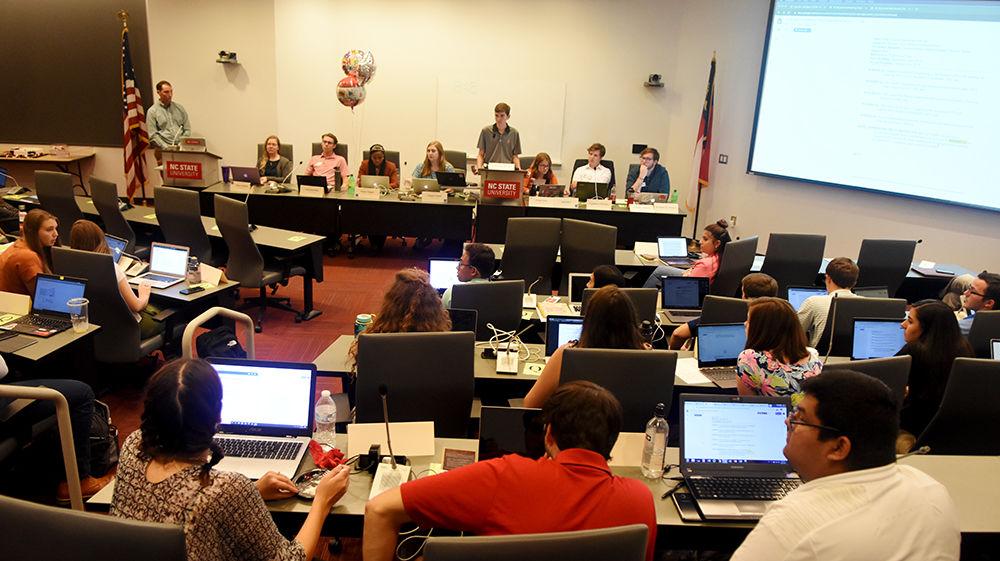Student Government received almost $450,000 in funds through student fees for the 2019-20 academic year, most of which goes right back to student organizations and promoting initiatives such as Pack the Polls.
Student Body Treasurer Garrison Seitz, a second-year studying civil engineering, is currently working on the budget for the 100th session of senators.
“The budget is made in the previous session for the next session,” Seitz said. “In the 98th session, they made the 99th session budget. We work with our Student Involvement officers and use the full time enrollment estimate in order to calculate the total amount to budget for. Now it is an estimate, so it could be higher or lower, but the budget is there just to manage our money.”
Student Government currently has judicial, executive, legislative and treasury branches. Each branch has an allotment of money, as well as the Board of Elections, but the budget for the executive branch is four times as much as the next branch, according to the 99th session budget. The executive holds $8,000 for this session.
“Instead of being limited to the formal stances that the Senate has for initiatives for the student body, the executive branch can create its own initiatives and create new ideas for the student body with this money,” Seitz said.
Seitz said the $8,000 the executive branch holds is discretionary, meaning it can be spent however the branch wants, within reason.
“Its limits are making sure we are following university policies and regulations, making sure we don’t break any laws,” Seitz said. “But besides that, free reign unless Senate decides somehow to check them. Senate has oversight.”
The legislative branch’s $2,000 is used similarly.
“It’s currently up to the Student Senate president to decide what is applicable,” Seitz said. “Senate committees can use it, Senate initiatives, but right now the president has control.”
The executive branch does not exercise any oversight over the legislative line item, although the treasury branch, which Seitz heads, has some control over both.
“If the treasurer feels like it does not actually fit within the line item description, then they can freeze the line item,” Seitz said.
According to Seitz, spending this funding depends on what each branch is seeking to do in each session.
“[The executive branch] this year has done the Respect the Pack initiative, a series of learning about diversity and inclusion,” Seitz said. “That is a big executive initiative. They’ve also done Pack the Polls funding, which is trying to get students out and voting, making sure they’re registered. Senate does more of the town hall stuff, reaching out to students, figuring out what needs are. Committees use that as funds for room reservations.”
According to the fall and spring appropriations bills, over $186,000 of Student Government money goes toward student organizations. This is done twice per year through the appropriations process. According to Seitz, there are certain criteria that organizations have to meet in order to obtain funds.
“The first step is they have to be registered with Student Involvement,” Seitz said. “We look at their history and the ineligibility form to see how they used that money in the past. We also have a scoring system which identifies how much the donation will actually impact campus life.”
The treasurer is not the only person who has a hand in the budget making.
“Creating the budget is the treasurer’s job, but actually reviewing it, verifying it, and approving it is through the Senate,” Seitz said. “The treasurer ultimately makes the draft, and the Senate modifies it where it sees fit.”








